Experimental and Numerical Analysis of the Effect of a New Lightning Protection System on Lightning Protection and Aerodynamic Noise Performance of Wind Turbine Blades
Abstract
:1. Introduction
2. Methods
2.1. Experimental Setup
2.2. Numerical Method
2.2.1. Numerical Method for Electromagnetic Field
2.2.2. Numerical Method for Aero-Noise Calculation
2.2.3. Numerical Setup
3. Results and analysis
3.1. Effect of NLPS on Protection Efficiency
3.2. Effect of NLPS on Aerodynamic Calculation
4. Conclusions
Author Contributions
Funding
Conflicts of Interest
References
- Wang, Y.; Zhupanska, O.I. Lightning strike thermal damage model for glass fiber reinforced polymer matrix composites and its application to wind turbine blades. Compos. Struct. 2015, 132, 1182–1191. [Google Scholar] [CrossRef]
- Cummins, K.L.; Quick, M.G.; Rison, W. Overview of the Kansas windfarm 2013 field program. In Proceedings of the 23rd International Lightning Detection Conference, Tucson, AZ, USA, 18–19 March 2014. [Google Scholar]
- Ishii, M.; Saito, M.; Natsuno, D. Lightning current observed at wind turbines in winter in Japan. In Proceedings of the International Conference on Lightning and Static Electricity (ICOLSE), Seattle, WA, USA, 18–20 September 2013; pp. 136–137. [Google Scholar]
- Wang, D.; Takagi, N.; Watanabe, T. Observed characteristics of upward leaders that are initiated from a windmill and its lightning protection tower. Geophys. Res. Lett. 2008, 35, 15. [Google Scholar] [CrossRef]
- Myers, J.; Cummins, K.L.; Hutchinson, M.; Nag, A. Lightning attachment to wind turbines in Central Kansas: Video observations, correlation with the NLDN and in-situ peak current measurements. Eur. Wind Energy Assoc. EWEA 2013, 284–291. [Google Scholar]
- Candela, G.A.; Madsen, S.F.; Nissim, M.; Myers, J.D.; Holboell, J. Lightning damage to wind turbine blades from wind farms in the U.S. IEEE Trans. Power Deliv. 2016, 31, 10431–11049. [Google Scholar]
- IEC/TR. Wind Turbine Generator Systems-Part 24; International Electrotechnical Commission (IEC): Geneva, Switzerland, 2002; p. 24. [Google Scholar]
- Golde, R.H. Lightning; Academic Press: New York, NY, USA, 1977; pp. 444–445. [Google Scholar]
- Cooray, V. The Lightning Protection; Institution of Engineering and Technology: London, UK, 2010; pp. 1661–1667. [Google Scholar]
- Watanabe, Y. Switching surge flashover characteristics of extremely long air gaps. IEEE Trans. Power Appar. Syst. 1967, 86, 9339–9436. [Google Scholar] [CrossRef]
- Paris, L. Influence of air gap characteristics on line to ground switching surge strength. IEEE Trans. Power Appar. Syst. 1967, 86, 936–947. [Google Scholar] [CrossRef]
- Suzuki, T.; Miyake, K. Breakdown process of long air gaps with positive switching impulses. IEEE Trans. Power Appar. Syst. 1975, 94, 10211–11043. [Google Scholar] [CrossRef]
- Les, R.G. Research on long air gap discharges at Les Renardières. Electra 1972, 23, 1531–1557. [Google Scholar]
- Les, R.G. Research on long air gap discharges—1973 results. Electra 1974, 35, 47–155. [Google Scholar]
- Les, R.G. Positive discharges in long air gaps at Les Renardières—1975 results and conclusions. Electra 1977, 53, 311–352. [Google Scholar]
- Les, R.G. Negative discharges in long air gaps at Les Renardières—1978 results. Electra 1981, 74, 672–718. [Google Scholar]
- Qian, G.J.; Wang, X.Y.; Yan, J. The lightning shielding simulation theory and test technology. High Volt. Eng. 1998, 24, 263–271. [Google Scholar]
- Yokoyama, S. Lightning protection of wind turbine generation systems. In Proceedings of the IEEE 7th Asia-Pacific International Conference on Lightning (APL), Chengdu, China, 1–4 November 2011; pp. 9419–9447. [Google Scholar]
- Garolera, A.C.; Holboell, J.; Madsen, S.F. Lightning attachment to wind turbine surfaces affected by internal blade conditions. In Proceedings of the IEEE 2012 International Conference on Lightning Protection (ICLP), Vienna, Austria, 2–7 September 2012; p. 17. [Google Scholar]
- Radičević, B.M.; Savić, M.S.; Badea, I. Impact of wind turbine blade rotation on the lightning strike incidence. In Proceedings of the IEEE 2012 International Conference on Lightning Protection (ICLP), Vienna, Austria, 2–7 September 2012; p. 19. [Google Scholar]
- Radičević, B.M.; Savić, M.S.; Madsen, S.F. Impact of wind turbine blade rotation on the lightning strike incidence–A theoretical and experimental study using a reduced-size model. Energy 2012, 45, 6446–6454. [Google Scholar] [CrossRef]
- Peesapati, V.; Cotton, I. Lightning protection of wind turbines—A comparison of real lightning strike data and finite element lightning attachment analysis. Sustain power generation and supply. In Proceedings of the 2009 International Conference on Sustainable Power Generation and Supply (SUPERGEN ’09), Nanjing, China, 6–7 April 2009; p. 18. [Google Scholar]
- Rafael, B.R.; Victor, M.F.M.; João, P.S.C. Analysis of transient phenomena due to a direct lightning strike on a wind energy system. Energies 2012, 5, 2545–2558. [Google Scholar] [CrossRef]
- Le, P.F.; Aspas-Puertolas, J. Electrostatic field and lightning zoning analysis of a windmill: Study of current and innovative protection strategies. In Proceedings of the IEEE 2014 International Conference on Lightning Protection (ICLP), Shangai, China, 11–18 October 2014; pp. 6596–6666. [Google Scholar]
- Madsen, S.F.; Mieritz, C.F.; Candela, G.A. Numerical tools for lightning protection of wind turbines. In Proceedings of the 2013 International Conference on Lightning and Static Electricity, Seattle, WA, USA, 18–20 September 2013. [Google Scholar]
- Wen, X.H.; Qu, L.; Wang, Y.; Chen, X.Y.; Lan, L.; Si, T.J.; Xu, J.W. Effect of wind turbine blade rotation on triggering lightning: An experimental study. Energies 2016, 9, 1029. [Google Scholar] [CrossRef]
- Zhang, L.; Wang, G.Z.; Zhang, W.F.; Ma, Y.F.; Guo, Z.X.; Li, Q.M. An electro-geometric model for lightning shielding of multiple wind turbines. Energies 2017, 10, 1272. [Google Scholar] [CrossRef]
- Zhou, Q.; Liu, C.; Bian, X.; Lo, K.L.; Li, D. Numerical analysis of lightning attachment to wind turbine blade. Renew. Energy 2018, 116, 5849–5853. [Google Scholar] [CrossRef]
- Yan, J.; Li, Q.; Guo, Z. Puncture position on wind turbine blades and arc path evolution under lightning strikes. Mater. Des. 2017, 122, 1972–1975. [Google Scholar] [CrossRef]
- Wang, Y.; Zhupanska, O.I. Estimation of the electric fields and dielectric breakdown in non-conductive wind turbine blades subjected to a lightning stepped leader. Wind Energy 2017, 20, 9274–9282. [Google Scholar] [CrossRef]
- Tomimatsu, S.; Fujisawa, N. Measurement of aerodynamic noise and unsteady flow field around a symmetrical airfoil. J. Vis. 2002, 5, 3813–3888. [Google Scholar] [CrossRef]
- Munekata, M.; Koshiishi, R.; Yoshikawa, H.; Ohba, H. An experimental study on aerodynamic sound generated from wake interaction of circular cylinder and airfoil with attack angle in tandem. J. Therm. Sci. 2008, 17, 2122–2217. [Google Scholar] [CrossRef]
- Kim, H.J.; Lee, S.; Fujisawa, N. Computation of unsteady flow and aerodynamic noise of NACA0018 airfoil using large-eddy simulation. Int. J. Heat Fluid Flow 2006, 27, 2292–2342. [Google Scholar] [CrossRef]
- Peixun, Y.U.; Junqiang BA, I.; Jiangtao, H.; Shu, J. Aerodynamic noise of the rod-airfoil computed by using acoustic analogy. Acta Aerodyn. Sin. 2013, 31, 2042–2108. [Google Scholar]
- Chen, Y.Q.; Fang, Y.F. Research on improved method of wind turbine Airfoil S834 based on noise and aerodynamic performance. Appl. Mech. Mater. 2015, 744, 2532–2558. [Google Scholar] [CrossRef]
- Liu, S.; Li, X.; He, C.; Wu, K.; Ye, S.; Wang, Y. Hybrid RANS/LES simulation and optizimation of aerodynamic noise of wind turbine. In Proceedings of the ISFMFE-International Symposium on Fluid Machinery & Fluid Engineering, Wuhan, China, 22–25 October 2014. [Google Scholar]
- Wang, J.; Zhang, C.; Wu, Z.; Wharton, J.; Ren, L. Numerical study on reduction of aerodynamic noise around an airfoil with biomimetic structures. J. Sound Vib. 2017, 394, 465–468. [Google Scholar] [CrossRef]
- Andrew, B.; Anupam, S. Numerical investigation of noise reduction mechanisms in a bio-inspired airfoil. J. Sound Vib. 2019, 453, 3143–3227. [Google Scholar]
- Yannick, D.M.; Benshuai, L.; Hasan, K.J.; Mahdi, A. A semi-analytical noise prediction model for airfoils with serrated trailing edges. Renew. Energy 2019, 143, 6796–6891. [Google Scholar]
- Jie, S.; Hang, L.; Dai, Z.; Zhaolong, H.; Yan, B.; Hongbo, Z.; Lei, Z. Aerodynamic noise assessment for a vertical axis wind turbine using improved delayed detached eddy simulation. Renew. Energy 2019, 141, 5595–5769. [Google Scholar] [CrossRef]
- Xinkai, L.; Ke, Y.; Hao, H.; Xiaodong, W.; Shun, K. Effect of tailing-edge thickness on aerodynamic noise for wind turbine airfoil. Energies 2019, 12, 270. [Google Scholar] [CrossRef]
- Chari, M.V.K.; Konrad, A.; D’Angelo, J. Finite element computation of three-dimensional electrostatic and magnetostatic field problem. IEEE Trans. Magn. 2003, 19, 23212–23324. [Google Scholar] [CrossRef]
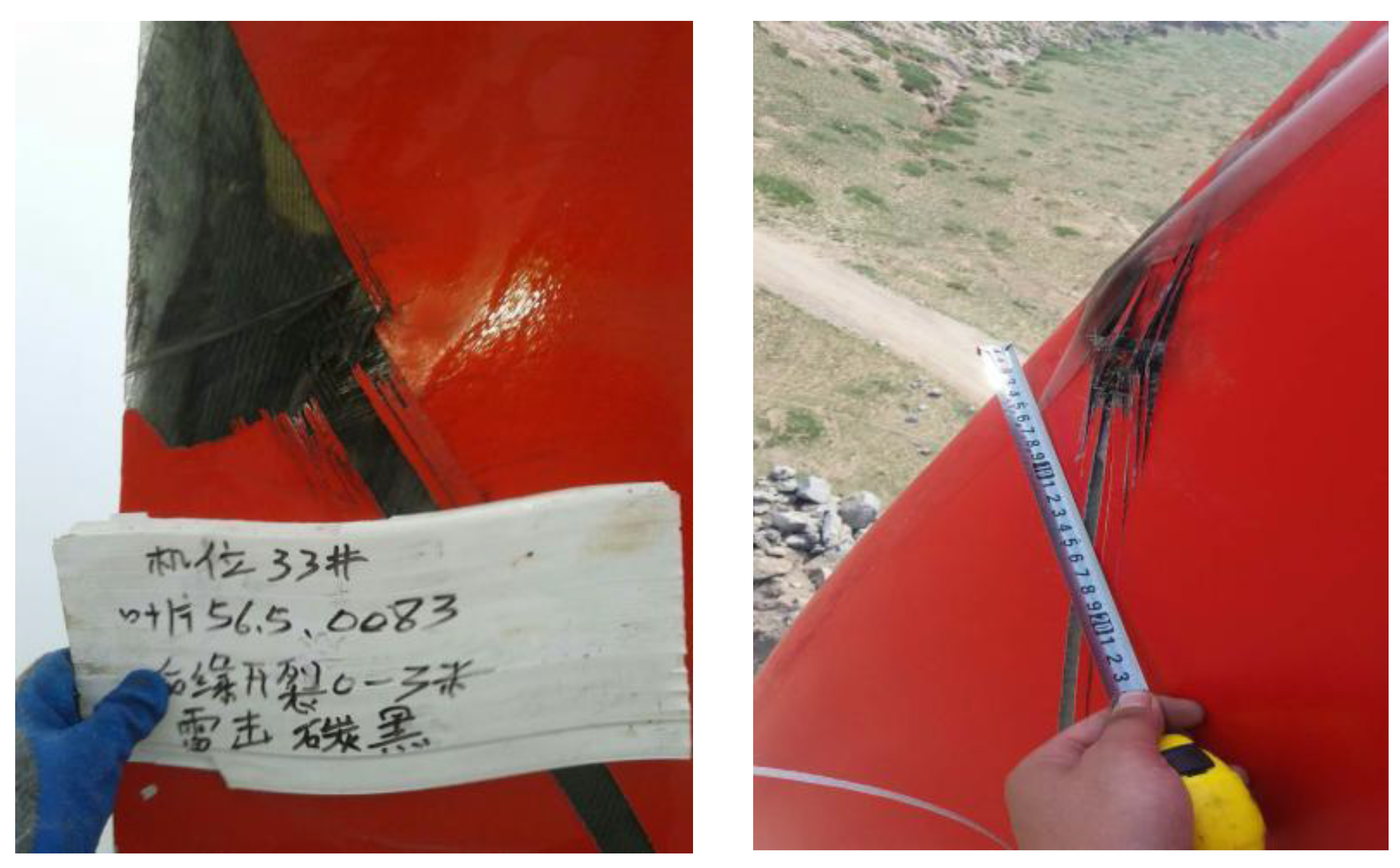
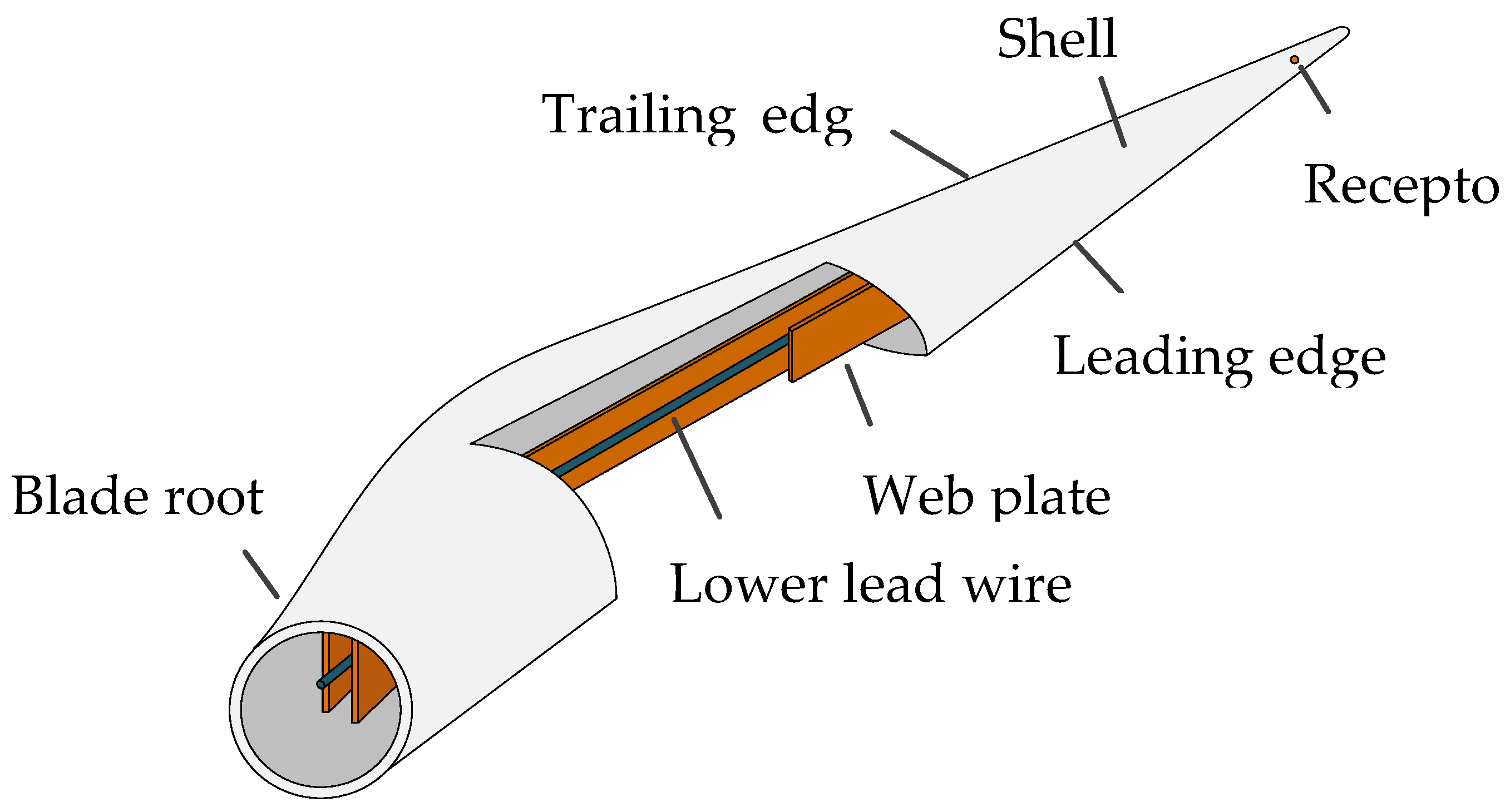
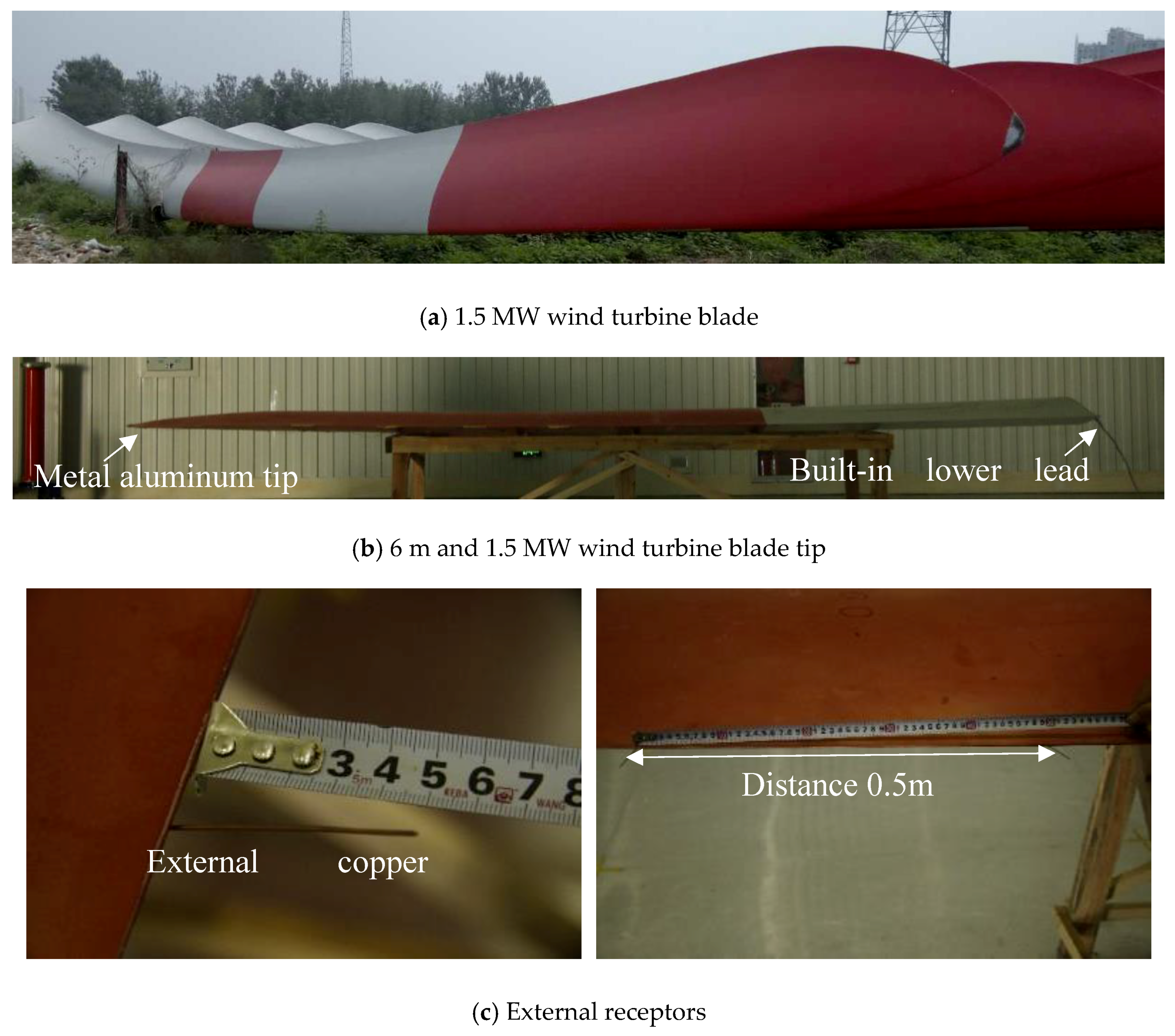


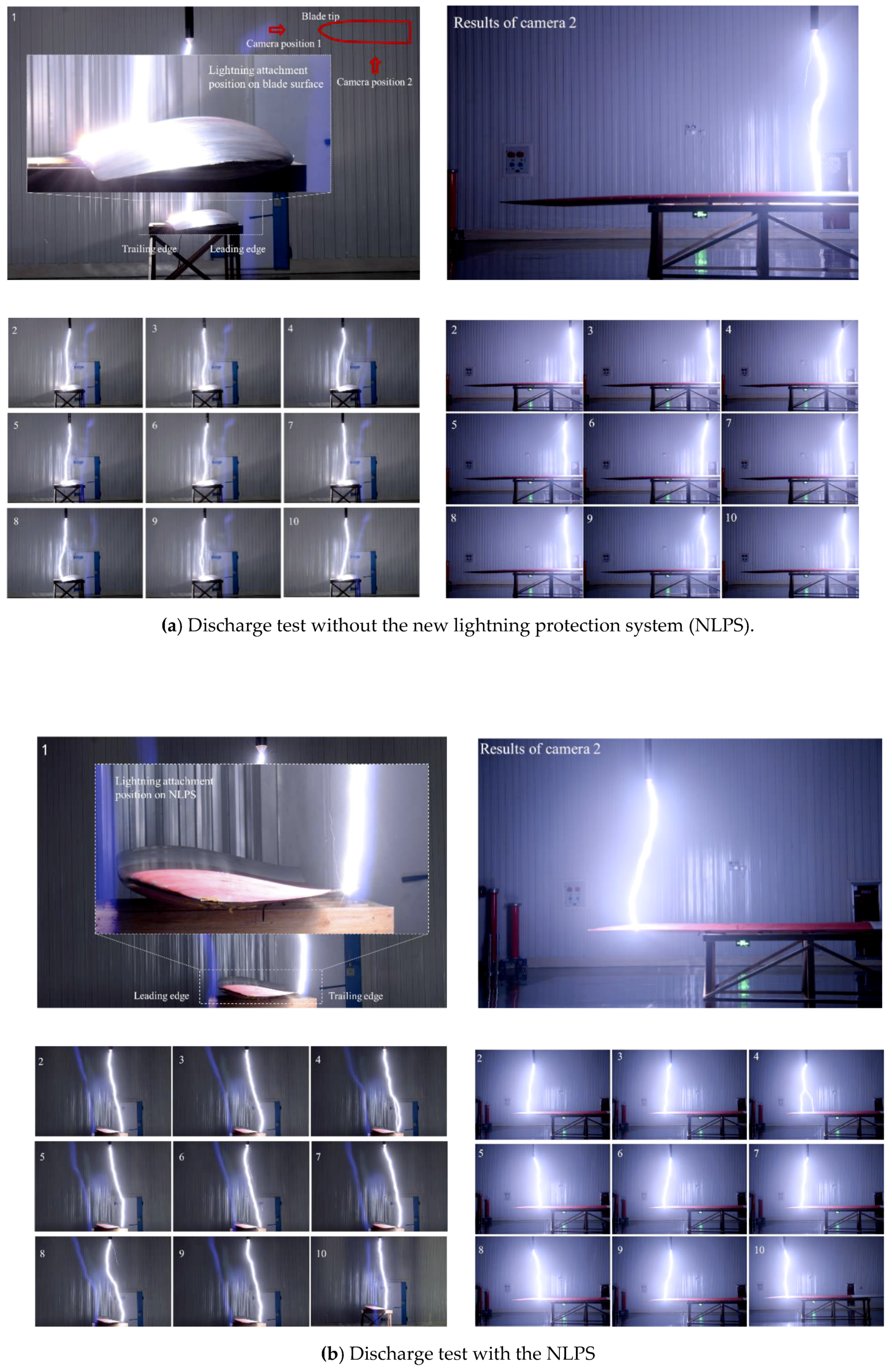

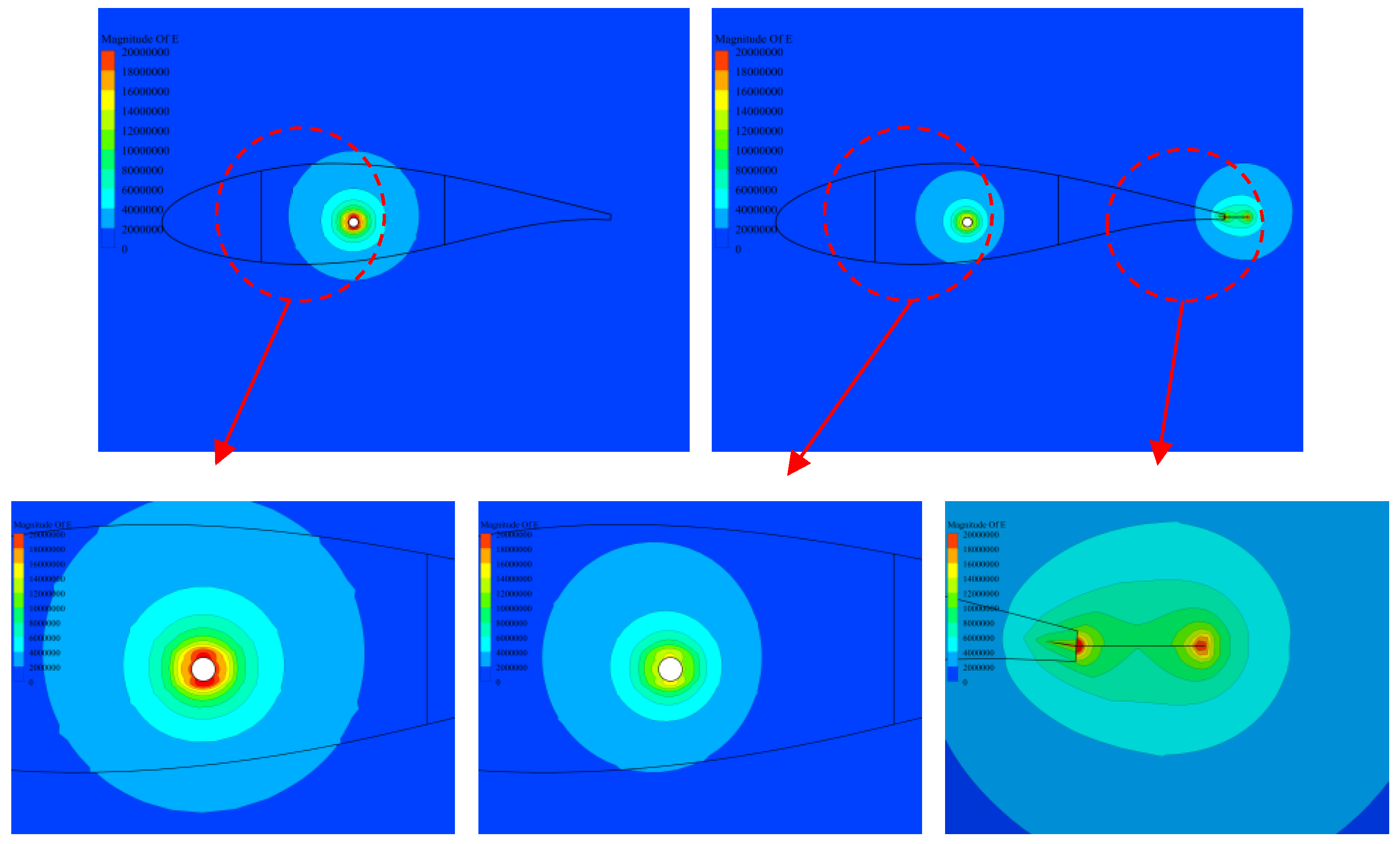

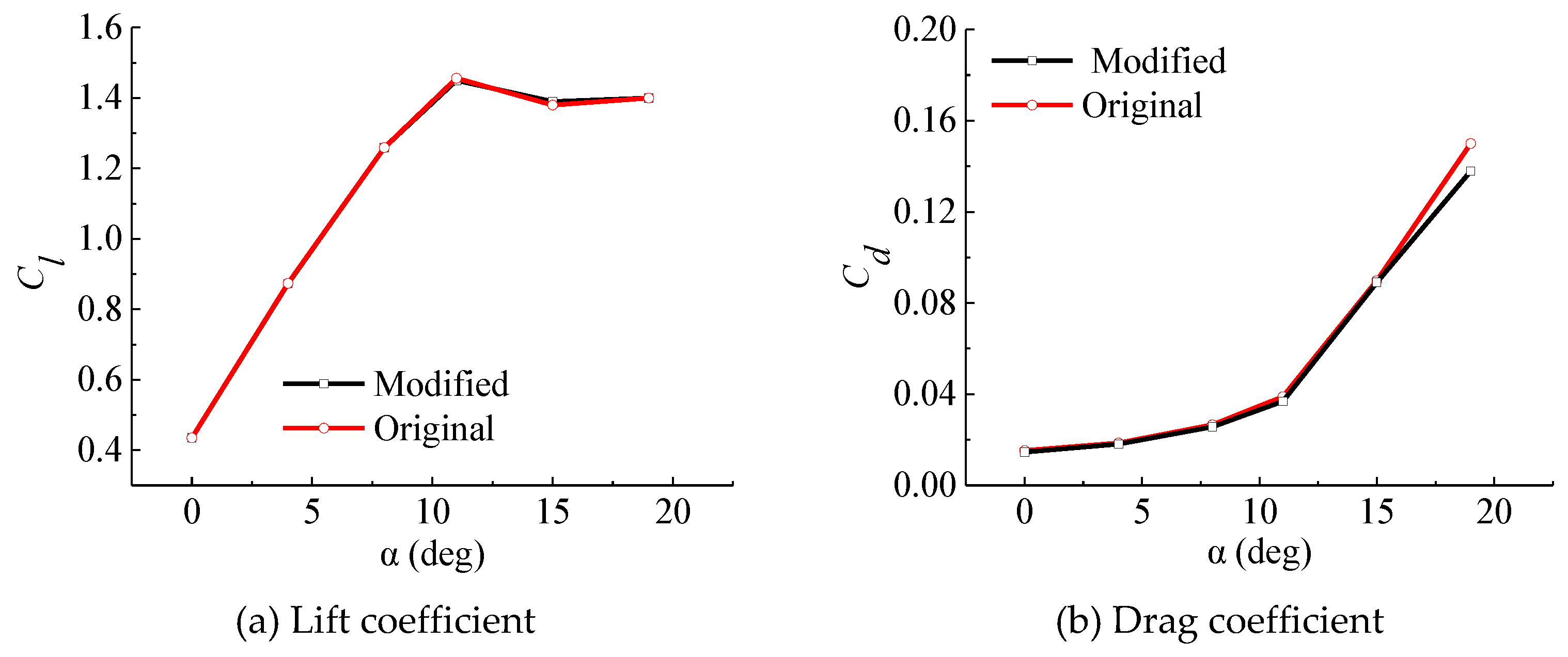
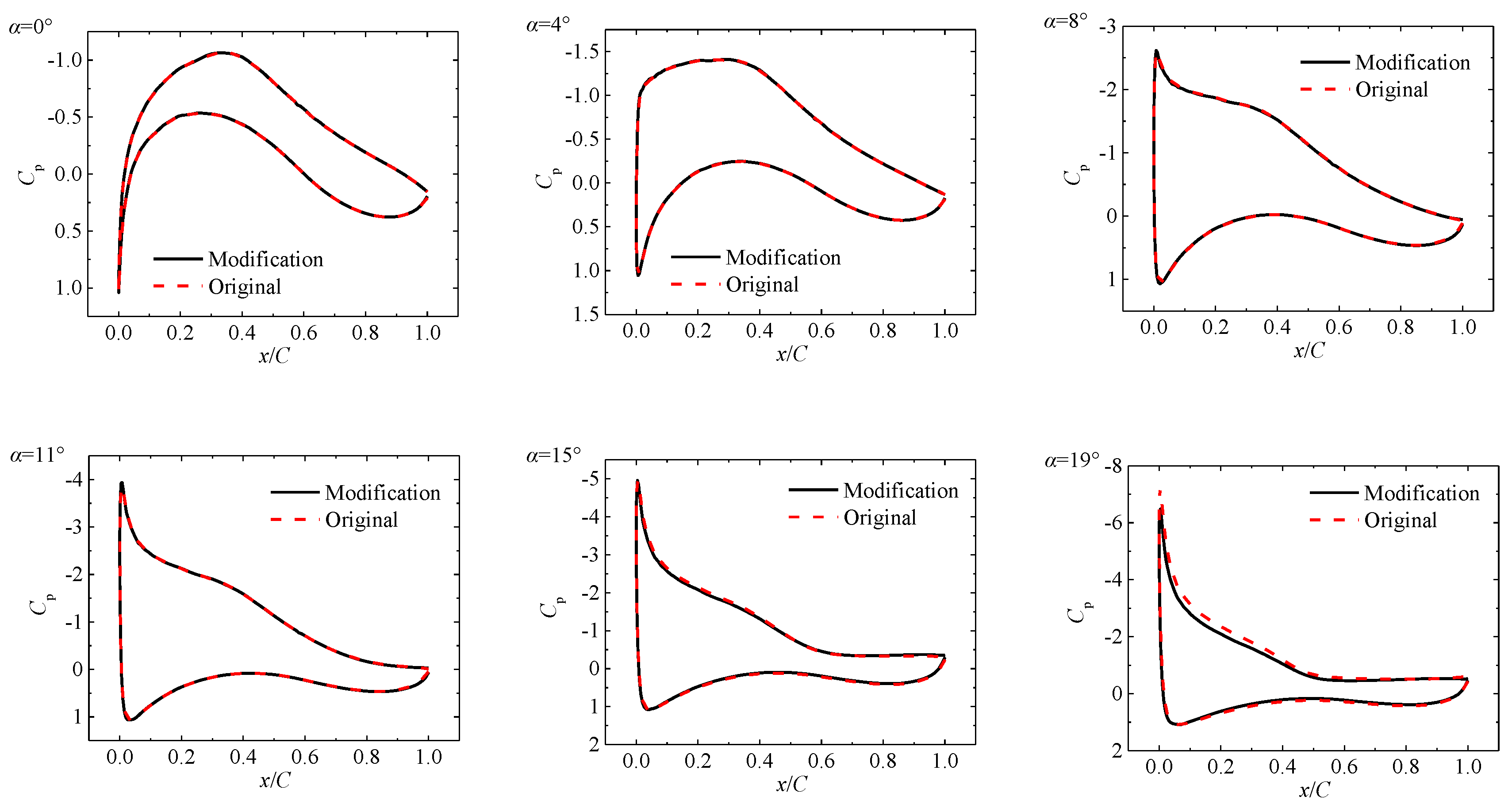


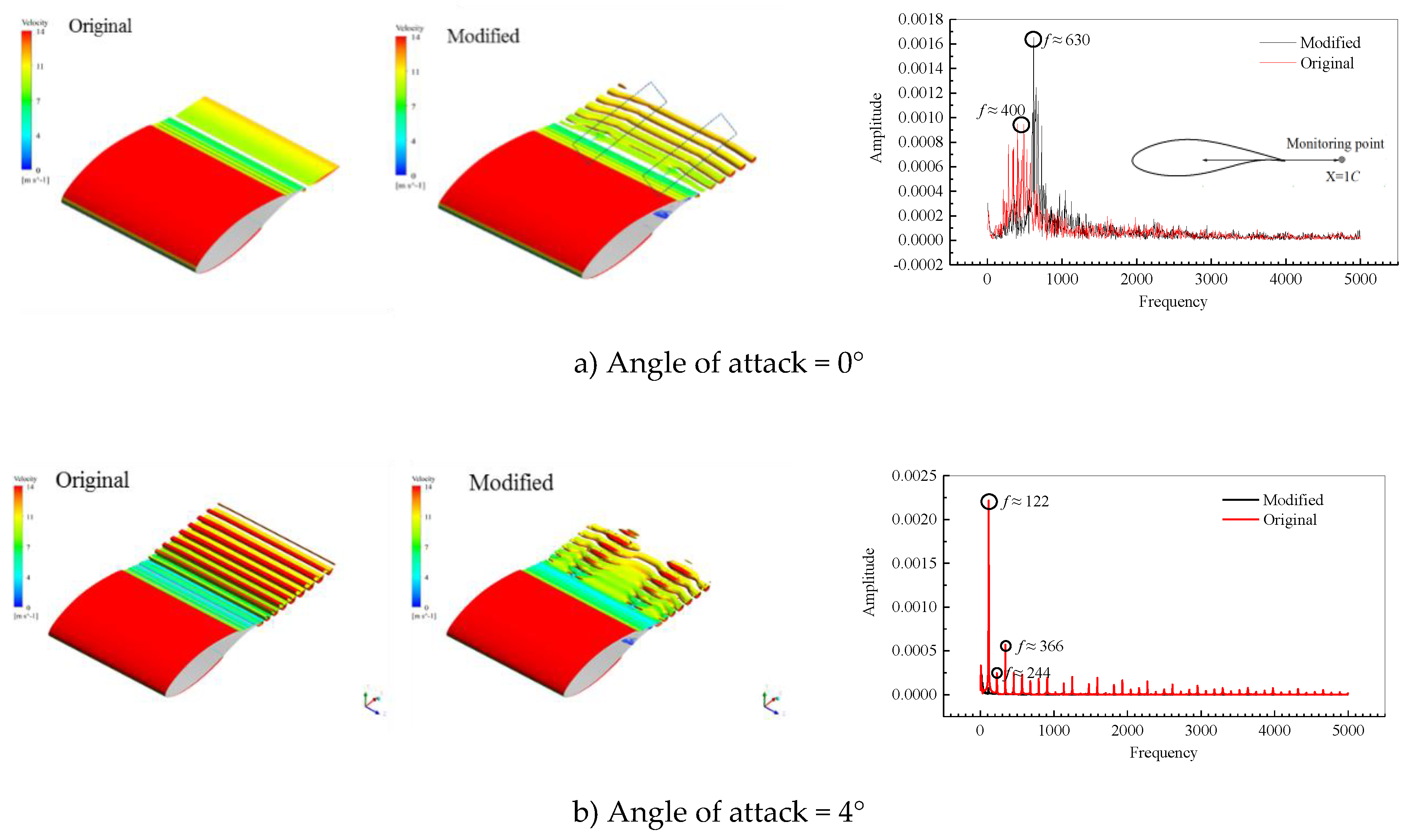
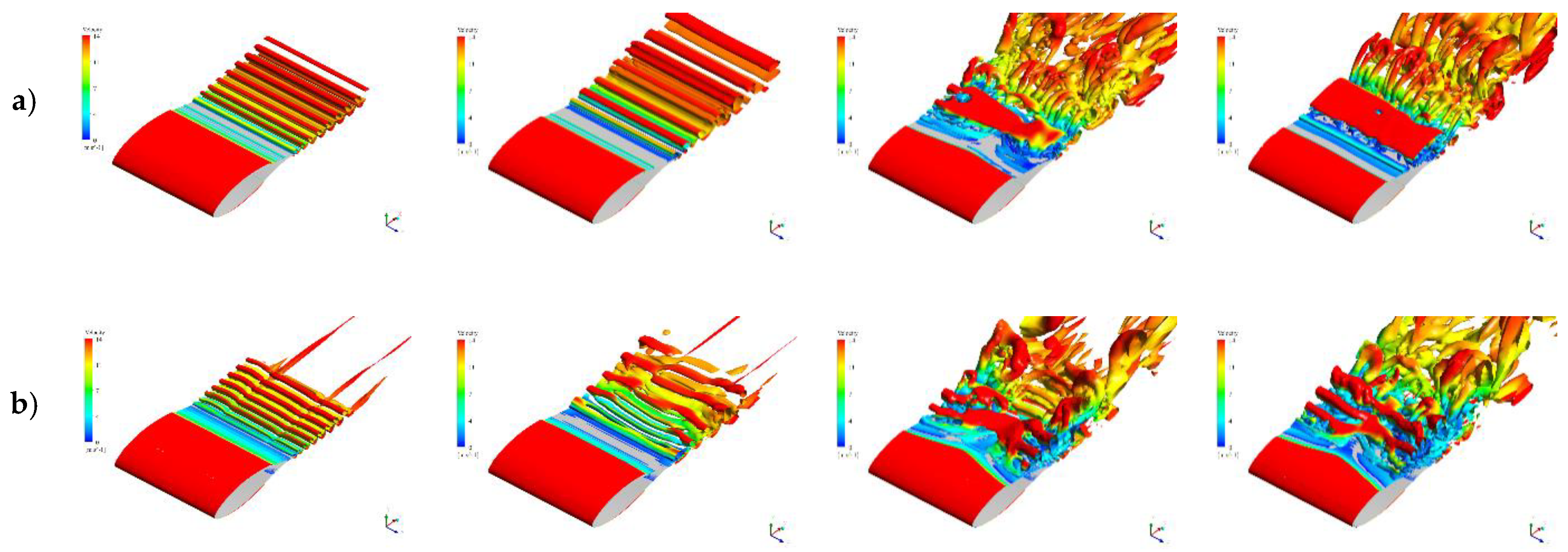
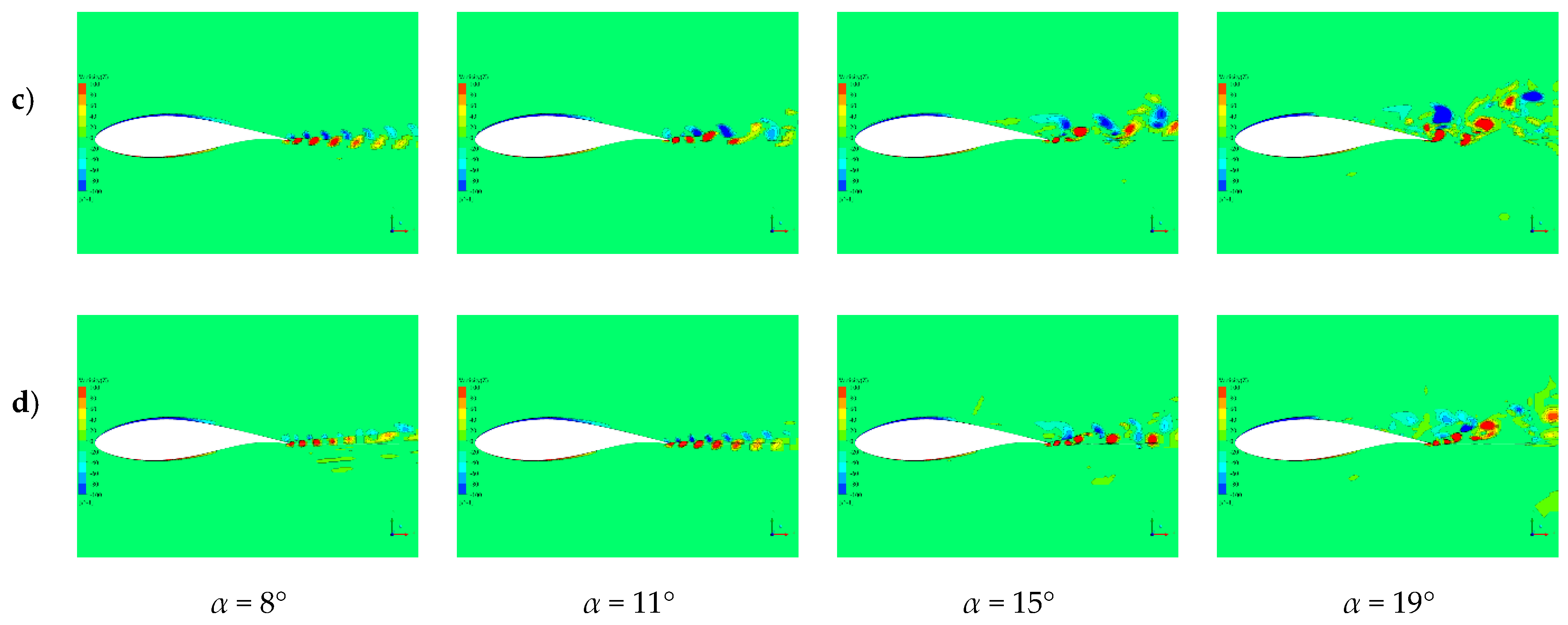
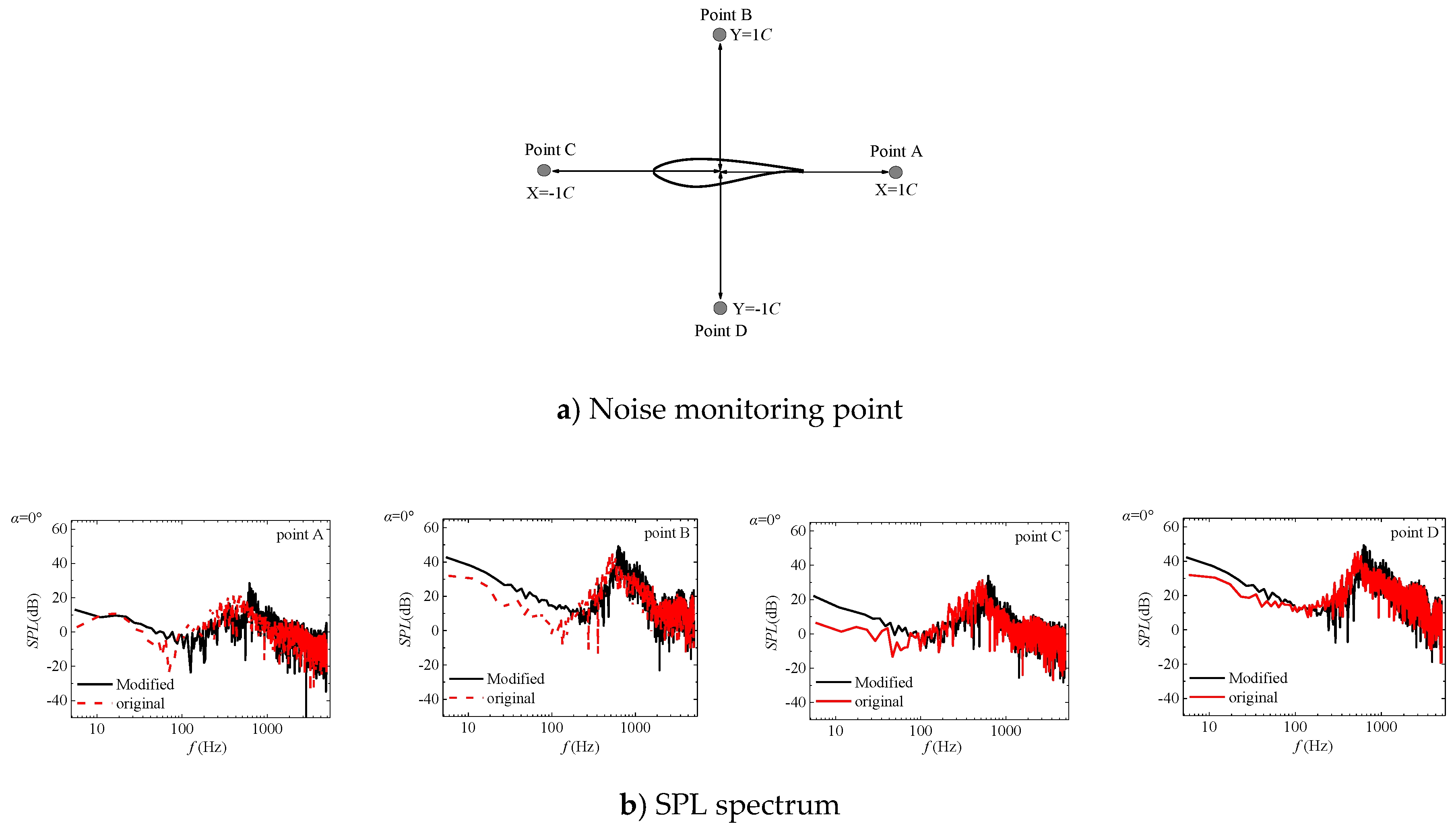

| Test Model | The Position of Lightning Attachment (time) | Damage Rate of Blade (%) | Protection Rate of Blade (%) | ||
|---|---|---|---|---|---|
| Surface of Blade | Metal Tip | External Copper Wire (NLPS) | |||
| Original | 10 | 0 | 0 | 100 | 0 |
| Modified | 0 | 0 | 10 | 0 | 100 |
© 2019 by the authors. Licensee MDPI, Basel, Switzerland. This article is an open access article distributed under the terms and conditions of the Creative Commons Attribution (CC BY) license (http://creativecommons.org/licenses/by/4.0/).
Share and Cite
Li, X.-k.; Guo, J.-x.; Chen, X.-m.; Yang, K.; He, T.-y.; Wang, X.-d. Experimental and Numerical Analysis of the Effect of a New Lightning Protection System on Lightning Protection and Aerodynamic Noise Performance of Wind Turbine Blades. Electronics 2019, 8, 1020. https://doi.org/10.3390/electronics8091020
Li X-k, Guo J-x, Chen X-m, Yang K, He T-y, Wang X-d. Experimental and Numerical Analysis of the Effect of a New Lightning Protection System on Lightning Protection and Aerodynamic Noise Performance of Wind Turbine Blades. Electronics. 2019; 8(9):1020. https://doi.org/10.3390/electronics8091020
Chicago/Turabian StyleLi, Xin-kai, Jin-xue Guo, Xiao-ming Chen, Ke Yang, Tian-yu He, and Xiao-dong Wang. 2019. "Experimental and Numerical Analysis of the Effect of a New Lightning Protection System on Lightning Protection and Aerodynamic Noise Performance of Wind Turbine Blades" Electronics 8, no. 9: 1020. https://doi.org/10.3390/electronics8091020





